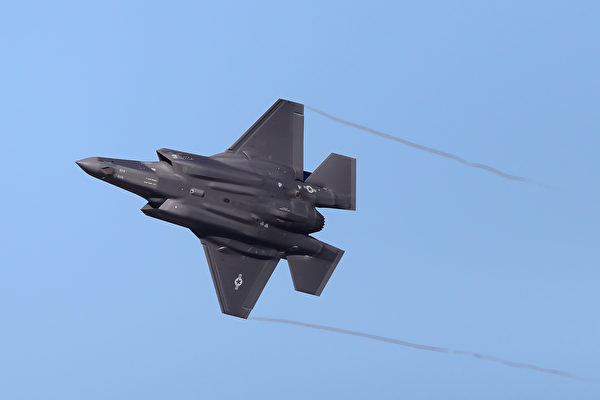The Communist Party of China’s J-20 is the world’s third fifth-generation fighter jet to enter mass production and service after the United States’ F-22 and F-35. Despite China’s claims of the J-20 having stealth capabilities and advanced combat power, experts say its performance still falls short compared to the American-made F-35 fighter jet.
According to a report from the “Newsweek” on June 6, Kim Min-Seok, a researcher at the Korea Defense and Security Forum, compared the J-20 and the F-35 fighter jets in an interview with the magazine.
Kim Min-Seok said, “The J-20 has a larger internal fuel capacity than the F-35, but its airframe is also larger. Its range is similar to or even shorter than that of the F-35. Additionally, unlike the F-35, the J-20 cannot carry air-to-ground bombs internally, which is a major limitation of the J-20.”
The primary mission of the J-20 is to achieve air superiority. China is attempting to gain air supremacy over Indian aircraft in the border regions of the Himalayas. Traces of the J-20 have recently been spotted at the Tibet Shigatse Air Force Base near the Indian border.
Initially, the J-20 used domestically-produced WS-10 engines, but later it may have been equipped with more powerful WS-15 engines. Shortly after the end of the Paris Air Show last year, footage of the J-20’s first public flight with WS-15 engines appeared online, indicating a potential leak by the Chinese authorities.
However, Kim Min-Seok pointed out that while the WS-15 engine is more powerful, its performance is still expected to be inferior to the Pratt & Whitney F135 engine used in the F-35.
The F135 engine, produced by Pratt & Whitney, powers the F-35A (conventional takeoff and landing), F-35B (short takeoff/vertical landing), and F-35C (naval carrier-based aircraft). The F135 engine provides over 40,000 pounds of thrust, serving as the powerhouse of the F-35 fighter jet. It boasts unparalleled stealth capabilities, world-class heat management, and the most advanced integrated engine control system.
Pratt & Whitney states that the F135 engine is the most powerful and reliable advanced fighter engine in history. It demonstrates significant improvements in readiness and reliability over fourth-generation fighter engines in fifth-generation fighter engines.
Brent Eastwood, a researcher at the R Street Institute in Washington, D.C., previously told National Interest magazine that while the J-20 may be faster than the F-35, the F-35 has stronger stealth capabilities.
He also mentioned that the J-20 lacks a cannon and is unable to engage in air combat, while the lighter weight of the F-35 may give it an advantage in aerial combat situations.
Former U.S. Marine Corps Lt. Col. David Berke, who served as an F-22 pilot and F-35B squadron commander, told Business Insider website that in aerial combat, the specific purpose of cannons is for engagement.
Cannons are effective tools for close-range air combat, operating within a range of about 800 feet (244 meters). They are not susceptible to electronic warfare, do not require radar, and are not deceived by enemy flares. Furthermore, they travel at supersonic speeds after firing, without the need for rocket boosters.
Berke stated that the J-20’s lack of cannons in its design indicates that “China does not believe that dogfighting is the mission they were designed for. They may prefer to avoid dogfighting at all costs.”
—
This article has been translated and rewritten from its original source, and any discrepancies do not reflect the opinions of the original journalist, publisher, editor, or date of publication.

